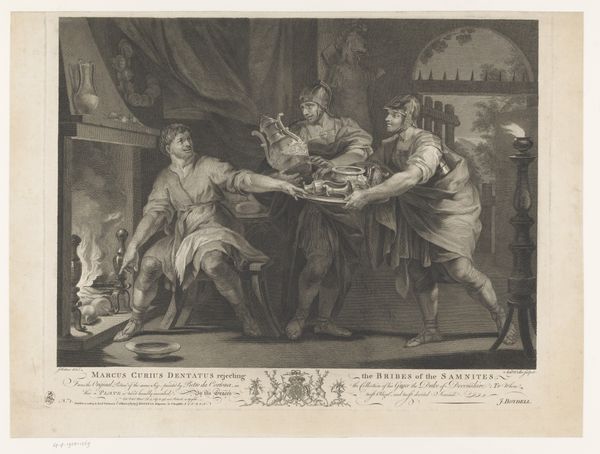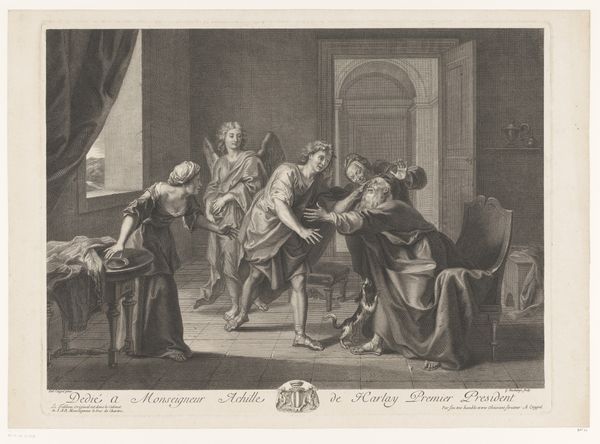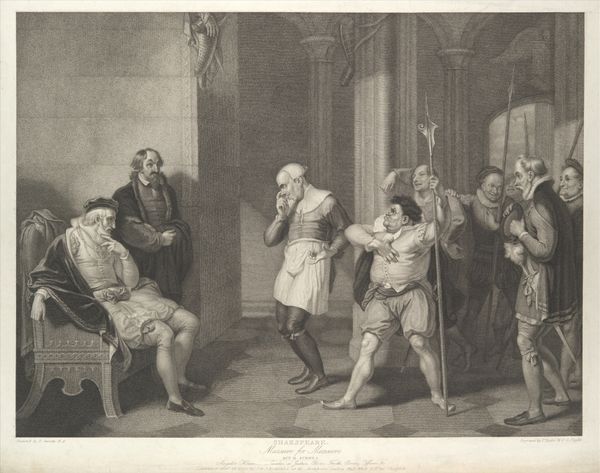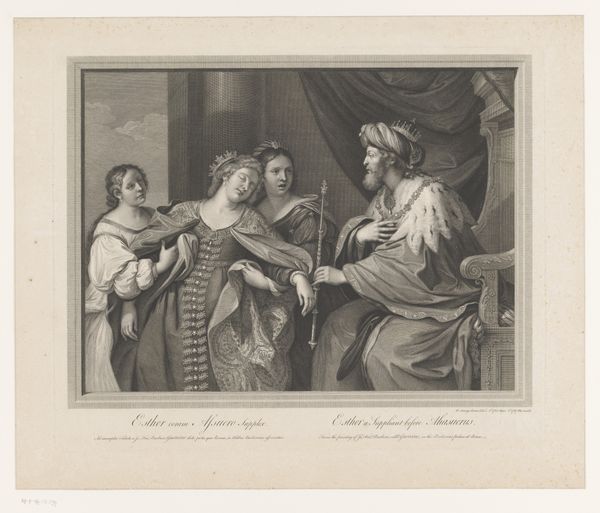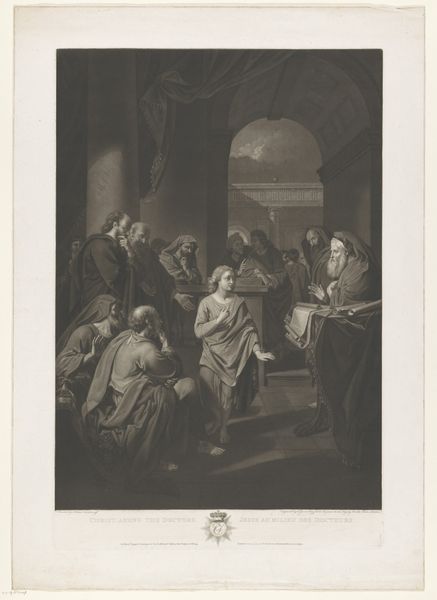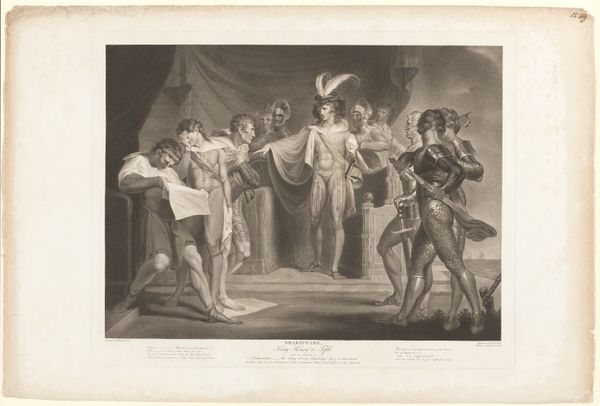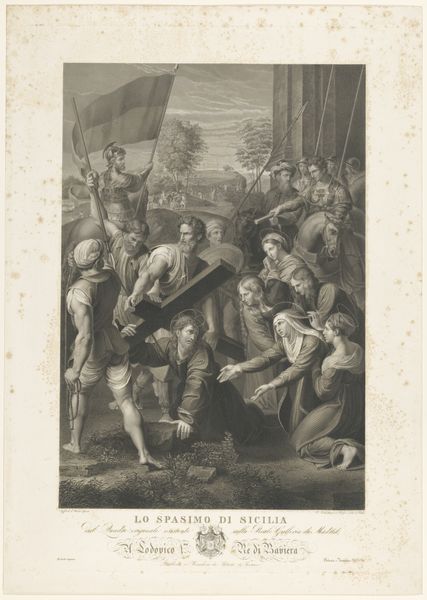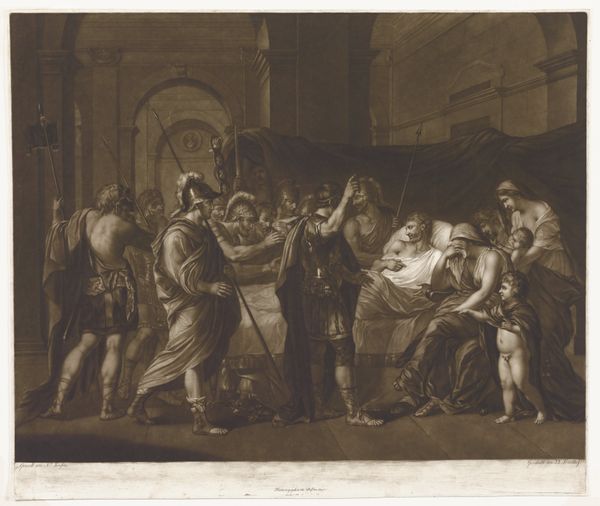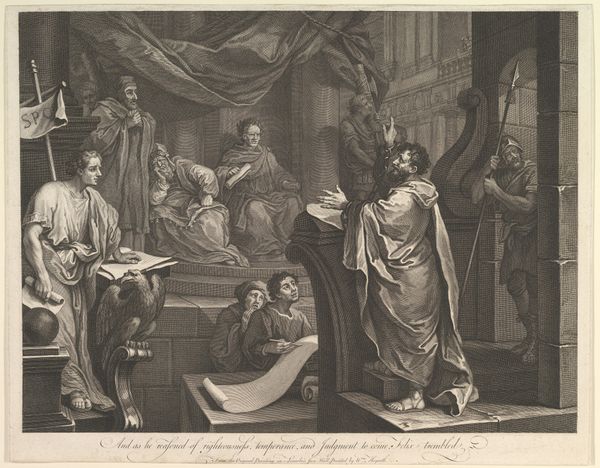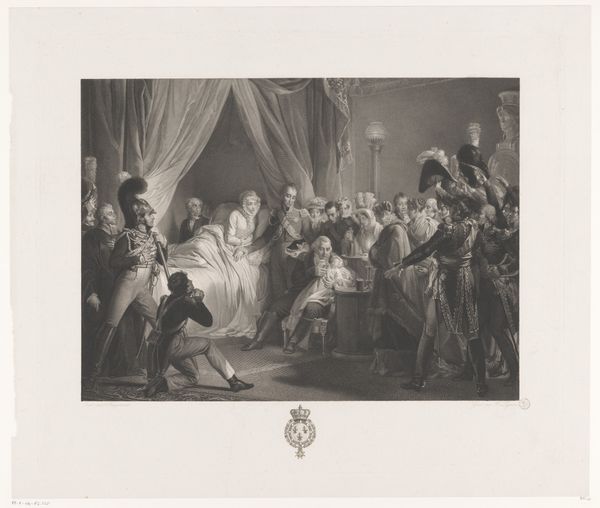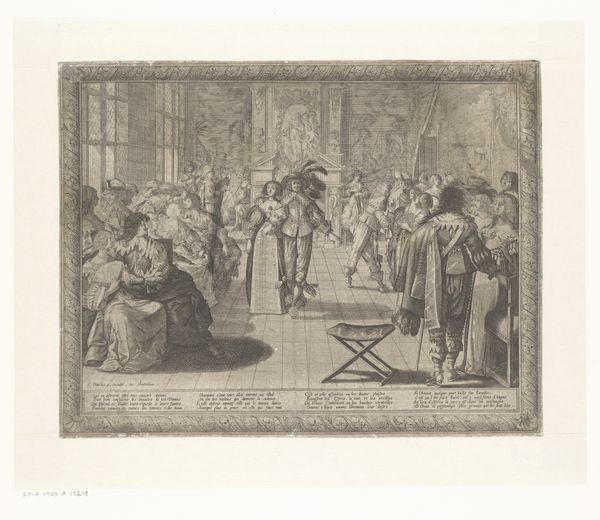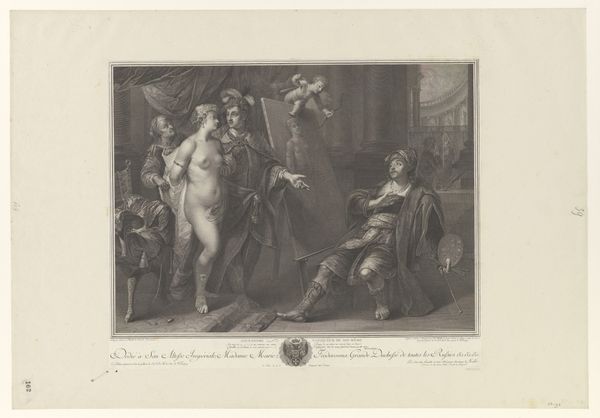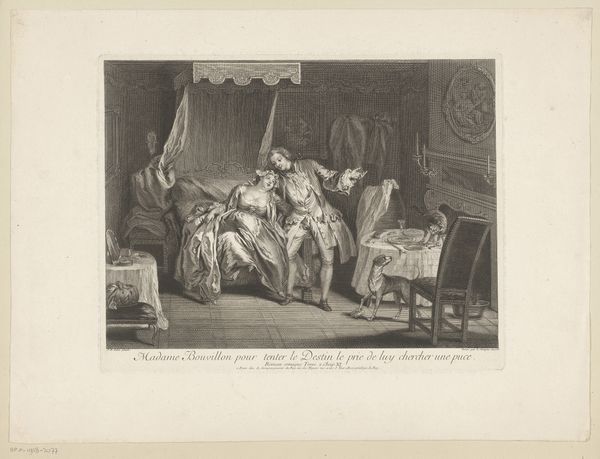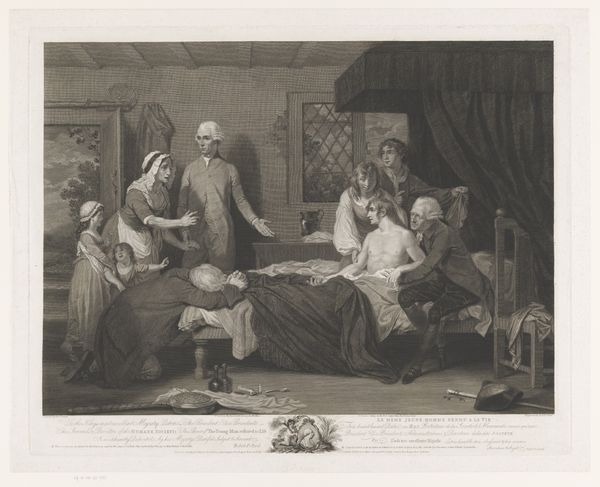
engraving
#
portrait
#
neoclacissism
#
historical photography
#
group-portraits
#
history-painting
#
academic-art
#
engraving
Dimensions: height 584 mm, width 649 mm
Copyright: Rijks Museum: Open Domain
Editor: So, here we have William Ward's 1792 engraving depicting Cardinal Francisco Jiménez de Cisneros with Spanish noblemen. The linear quality of the engraving and its greyscale presentation gives it a formal, almost austere feel. What can we make of its visual rhetoric and making? Curator: Look at the way Ward used line and tone. This print wouldn't have been cheap or fast to produce, and it would have demanded a specific type of skill. The choice of engraving over other, possibly cheaper, printing methods is deliberate, linking the artwork to notions of high art and refined taste that were linked with those that could afford such production processes. Editor: That makes sense. So, the medium itself signifies something about status. It almost seems to validate and reinforce it, which strikes me as ironic given the Cardinal's perceived authority. Curator: Exactly! The engraving process flattens everything, rendering the textures of different materials—the cardinal's robe, the nobles' attire—somewhat uniform. What does it say about how value is assigned not to the individual craft involved in the production of a tapestry versus courtier garments, but the master printmaker's role as 'artist'? Think about the labor and resources involved versus the end product. Editor: I see. It almost democratizes everything visually, even though the subject matter is highly exclusive and positioned as if history making were happening with them in charge. It shifts the power dynamic, because the *engraver* shapes our perspective, not those depicted. Curator: Precisely. And by creating reproducible images, the engraver, by means of reproductive printmaking, allows wider circulation and reinterpretation of established icons and figures of authority, creating an access previously unimaginable.. It redefines accessibility and perhaps subverts intended authority via production. Editor: That's fascinating. So, by focusing on the materials and methods of its making, we see the print challenging the very hierarchies it seems to portray at first glance. Curator: Indeed, that's how artistic intention often transforms when examined from a Materialist's approach.
Comments
No comments
Be the first to comment and join the conversation on the ultimate creative platform.
